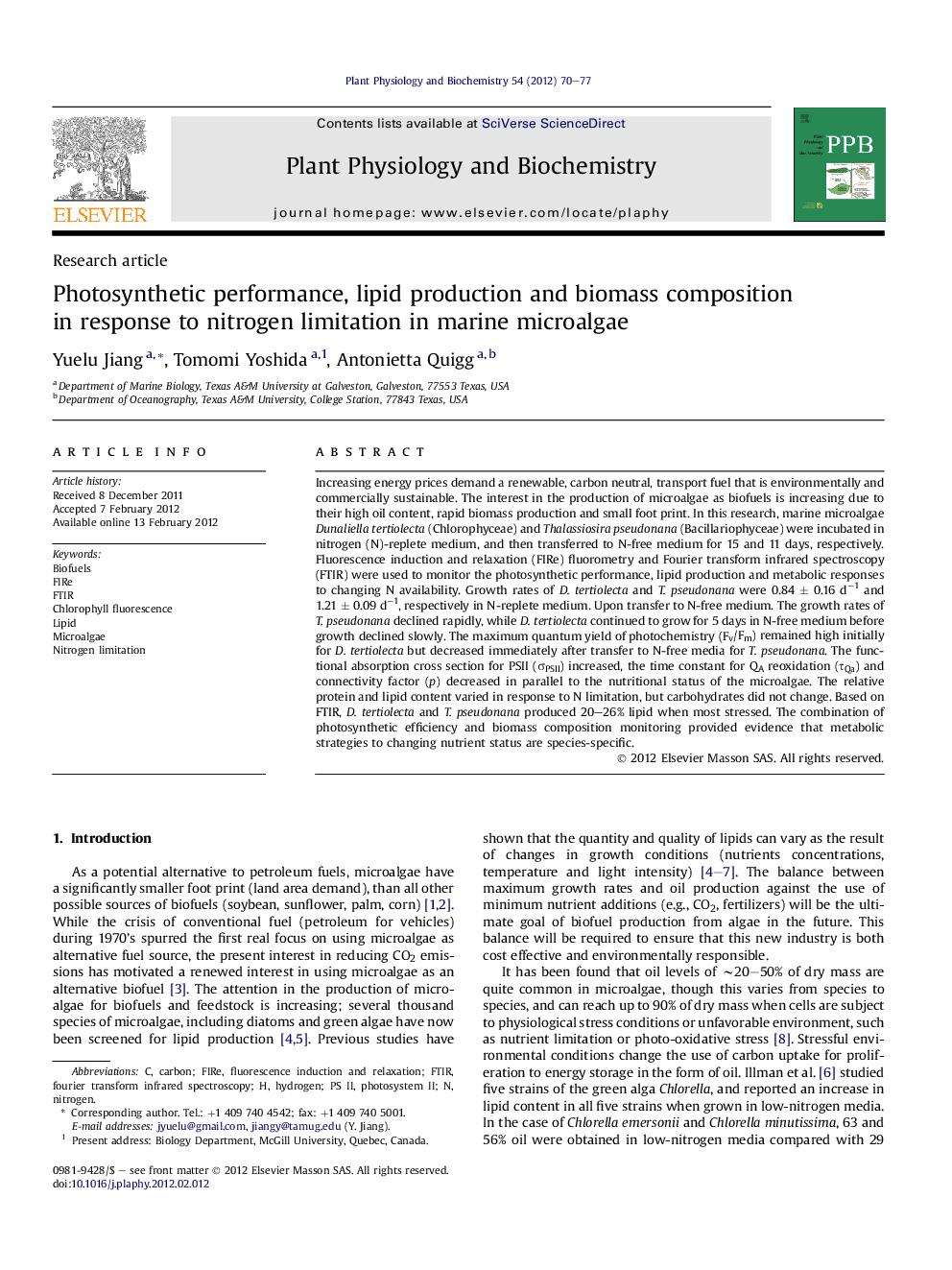| کد مقاله | کد نشریه | سال انتشار | مقاله انگلیسی | نسخه تمام متن |
|---|---|---|---|---|
| 2016216 | 1541967 | 2012 | 8 صفحه PDF | دانلود رایگان |

Increasing energy prices demand a renewable, carbon neutral, transport fuel that is environmentally and commercially sustainable. The interest in the production of microalgae as biofuels is increasing due to their high oil content, rapid biomass production and small foot print. In this research, marine microalgae Dunaliella tertiolecta (Chlorophyceae) and Thalassiosira pseudonana (Bacillariophyceae) were incubated in nitrogen (N)-replete medium, and then transferred to N-free medium for 15 and 11 days, respectively. Fluorescence induction and relaxation (FIRe) fluorometry and Fourier transform infrared spectroscopy (FTIR) were used to monitor the photosynthetic performance, lipid production and metabolic responses to changing N availability. Growth rates of D. tertiolecta and T. pseudonana were 0.84 ± 0.16 d−1 and 1.21 ± 0.09 d−1, respectively in N-replete medium. Upon transfer to N-free medium. The growth rates of T. pseudonana declined rapidly, while D. tertiolecta continued to grow for 5 days in N-free medium before growth declined slowly. The maximum quantum yield of photochemistry (Fv/Fm) remained high initially for D. tertiolecta but decreased immediately after transfer to N-free media for T. pseudonana. The functional absorption cross section for PSII (σPSII) increased, the time constant for QA reoxidation (τQa) and connectivity factor (p) decreased in parallel to the nutritional status of the microalgae. The relative protein and lipid content varied in response to N limitation, but carbohydrates did not change. Based on FTIR, D. tertiolecta and T. pseudonana produced 20–26% lipid when most stressed. The combination of photosynthetic efficiency and biomass composition monitoring provided evidence that metabolic strategies to changing nutrient status are species-specific.
► Dunaliella tertiolecta and Thalassiosira pseudonana produced 20–26% lipid when most stressed.
► These two species have different metabolic responses to N availability.
► Species-specific metabolic monitoring using the combination of FIRe and FTIR.
► Both these species are potential candidates for the biofuel industry.
Journal: Plant Physiology and Biochemistry - Volume 54, May 2012, Pages 70–77